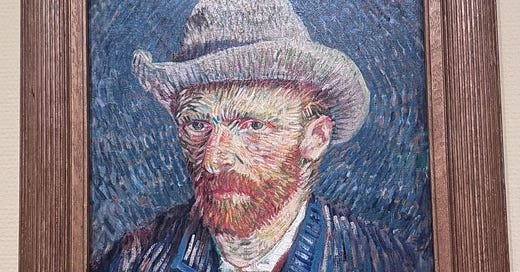The Pregnant Pause: Thoughtful Breaks to Aid Surgical Breakthroughs
Away from scalpels and sutures, but close to the act of surgery
Surgery is more art than it is medicine.
Today we take a step back from the scalpels, the scars, and the sutures, and make way for something I really want you to think about.
At the beginning, there was art. Then science happened.
When most of us were first asked to choose what we wanted to do with life, typically by the end of our 9th standard when this question was more serious, you knew that anything besides science was just the wrong answer, and if you wanted a roof over your head, two square meals, and a pat on your back, you needed to say “science”
You were still allowed to choose Doctor vs. Engineer if one or both of your parents weren’t doctors already.
But if they were, arts, science, commerce is not for you. You get a wider set of choices, like gynaecology, cardiology, neurology, radiology, etc. How lucky.
You were made to believe that arts is a bad choice. It’s what dumb kids do.
But you and I both know how everything around us is arts and humanities. Walk into a hospital and even for the most hardcore surgeon there’s a bunch of arts she must master:
The art of counselling
The art of sharing bad news
The art of explaining risk
The art of giving courage
The art of managing people
The art of working in a team
The art of making an incision
The art of dissection
The art of changing plans because of anatomical surprises
The list can go on. And it’s not the kind of list I’m putting together as a joke. These are real, hard skills that every surgeon must have, and they are all, by any stretch of imagination, artistic.
And it’s only obvious that we will face the same challenges that most artists face. But we have paid little attention to what those struggles look like and how they affect us.
This right here is a self-portrait of the massively illustrious and influential artist Vincent Van Gogh, captured from one of my recent trips to a museum. Van Gogh, known now for this exceptional work with colours, strokes, and imagination, lived a life devoid of attention. Vincent died by suicide at the tender age of 37, not knowing even in the slightest how his work would influence generations to come.
He suffered from anxiety, depression, and epilepsy, making him emotionally vulnerable. Known to have cut off his ear in the aftermath of a heated argument with another artist, Vincent lived the life of a pariah.
It took his surviving brother a lot of effort before he could give Vincent’s work the attention it deserved. Why are we talking about him but? Wasn’t this a newsletter about Endometriosis last time I checked? We’re doing because Van Gogh has given the most defining quote for life you would’ve ever read.
"I put my heart and my soul into my work, and have lost my mind in the process."
Doesn’t that sound familiar? Don’t we put every last ounce of energy into the work we do? And find ourselves losing our minds? One of us could be Vincent. The struggles of an artist weigh heavy on us all.
The first is burnout: endless patients, myriad personalities, and absolutely no fixed working hours push a lot of us into a corner, not knowing what the next best step might be.
Then comes anxiety: of performance, of underperformance, of responsibility, of running a unit and making it look effortless at the same time. No one likes a worried doctor.
The Imposter Syndrome: Even when things do go your way, you may find yourself wondering if you deserve any of this at all.
The burden of totality: What happens when I’m not around? Who’s going to take care of things? What will happen to all this I built?
This list can go on. You’re probably already thinking about the emotional challenges you deal with daily. The harder you think, the more the walls start to close in on you. Breaths become short, and the problem starts to inflate, grow bigger and bigger till all you can see is the problem. That is when you know you need help.
If you’re not that yet, that’s good, I’m not either. But I’ve found a way to keep myself this way.
It’s the art of taking breaks
Coming over to Iceland in this freezing time of the year (it’s always freezing in Iceland. It’s literally called Iceland) and witnessing the aurora borealis (commonly known as the northern lights) helped me realise how small we are in the grand scheme of things.
I don’t mean to be pretentious. No. But I do want to reflect on how important this break has been in helping me understand where I want to go in my journey as a surgeon.
Travelling has always helped me reconnect with the people closest to me, and with myself. But for you, this could be something else, like sports, running, cooking, or making music.
Whatever it is, I beg you to violently make time for it. Because when you do, you come a bit closer to your own self. This will be hard I warn you. There is a lot of guilt associated with taking breaks. You think you’re letting go of money, work, experience, patients, but as the title of this letter suggests, the pause is pregnant.
A correctly sized, precisely planned, and methodically executed break gives you much more than it takes away.
Good breaks help you realise that your problems are small, and they have very small and easy solutions. All you needed was to take a minute and think.
Breaks can be small too. Taking a break in the middle of a complex surgery can help you reassess the situation and come up with creative ways of attacking the problem.
I am going to leave you with that thought and this scenery. I hope you plan your breaks, cut yourself off from everything that reminds you of your problems, and just look at how marvellous the world around you is.












